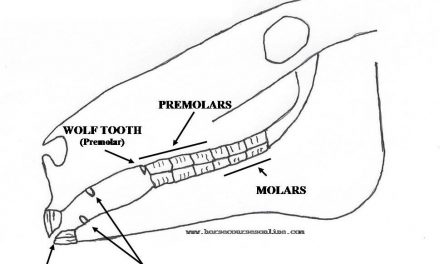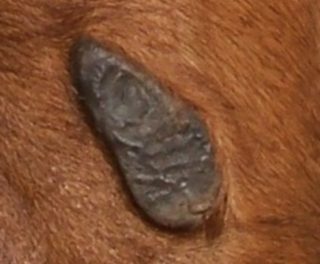THE WAY OF HORSES

Eleanor Blazer and my Kustom Kruzer
I read product “ingredient” labels.
But reading the ingredient list on horse fly spray is like reading a foreign language.
What is that stuff? Well you better know…some ingredients are toxic, some are poisons and some are just irritating.
Some of the ingredients are natural, some are synthetic, some are repellents (provides a barrier or drives off insects) and some are insecticides (kills insects through contact, ingestion or inhalation).
The ingredients may be found in different percentages and several may be mixed in the same product. In addition to the following active ingredients, fly sprays will also contain substances that act as carriers, fragrance, coat conditioners or as an aid to prevent the sun from breaking down the ingredients.
I’ve done the research, now you use the list to check what’s in your horse fly spray.
Butoxy polypropylene glycol – classified as a repellent. It is also used as a wetting agent, defoamer and lubricant. BPG is man-made.
Butoxy polypropylene glycol cannot be used on animals intended for slaughter or foals less than 12 weeks of age. It can cause minor eye and skin irritation, but is generally safe when used according to the product’s directions. BPG is never used as a sole ingredient. http://pesticideinfo.org/Detail_Chemical.jsp?Rec_Id=PC34206
Cajeput – used as a repellent in some natural products. It comes from the cajeput tree, which grows in Australia and southeast Asia.
Cajeput is primarily used in human products as a treatment for joint problems, as an inhaled decongestant; in topical solutions for burns, oily skin, eczema and muscle pain. Cajeput is also used in aromatherapy. It has a camphor-like smell that is slightly fruity. The oil can irritate the skin.
Cedar oil – used as a repellent in some natural products. It is extracted from cypress or juniper trees (rarely from true cedar trees). Cedar oil is primarily used in pet products to repel fleas. It is not very effective for repelling insects that commonly torment horses. It is an irritant to the eyes and can also cause mild irritation of skin. Citronella – used as a natural insect repellent and is also classified as a biopesticide by the Environmental Protection Agency (EPA). A biopesticide controls pests naturally and is non-toxic. It is extracted from the cymbopogon (lemongrass) plant. Citronella is most effective against mosquitoes, though it needs to be re-applied frequently. It has also been used to control lice. It can be a skin irritant in some horses. http://pesticideinfo.org/Detail_Chemical.jsp?Rec_Id=PC35066
Clove stem – used as a natural insect repellent. Clove stem oil is extracted from the stems of cloves, an evergreen type tree. Cloves are grown in Indonesia, Madagascar, the Philippines and the Molucca Islands. It is common in human aromatherapy and homeopathic products.
Clove essential oils can be skin irritants and should not be used at more than one percent dilution. Precautions on human products state “clove essential oil should not be used in cases of hemophilia, alcoholism, prostrate cancer, kidney problems, liver problems and in conjunction with the use of anti-coagulants.”
Corn mint oil – used as a natural repellent. Corn mint is primarily grown in Europe. The corn mint plant has a strong overwhelming mint smell and is used in gardens to repel pests. If taken internally it can cause abortion in humans.
Cypermethrin – is primarily an insecticide (it kills insects that eat or come in contact with it). Cypermethrin is a pryethroid (a synthetic or man-made chemical that is designed to work like natural pyrethrin). It is highly toxic to fish, bees and water insects.
In addition to killing insects, the chemical is considered to be a barrier, providing dual protection.
Cypermethrin is the strongest pryethroid on the market and the most toxic. http://pesticideinfo.org/Detail_Chemical.jsp?Rec_Id=PC35735
Di-n-propyl Isocinchomeronate – a synthetic insect repellent. It is used to expand repellent properties of other ingredients. Target pests are biting flies (i.e., black flies, bot flies, deer flies, face flies, horn flies, stable flies and horse flies), chiggers, fleas, gnats, house flies, lice, mosquitoes, and ticks. http://pesticideinfo.org/Detail_Chemical.jsp?Rec_Id=PC32798
Eucalyptus – is a natural insect repellent. The oil is extracted from the leaves of the eucalyptus tree (found in Australia) and from a grass located in Asia (C. nardus and C. winterianus). It is thought the scent confuses insects, making it difficult for them to locate the target. Eucalyptus is most effective against mosquitoes. The EPA warns of eye irritation. http://pesticideinfo.org/Detail_Chemical.jsp?Rec_Id=PC50
Geraniol – is derived from plants (primarily the geranium) and works as a natural mosquito repellent. It is also used in human perfume and as flavoring in some foods. It may attract bees due to its fragrant sweet odor.
Lemongrass – see citronella.
N-octyl Bicycloheptene Dicarboximide (MGK-264) – a synergist, it enhances the properties of other pesticide chemicals. It has no repellent or insecticidal properties of its own. http://pesticideinfo.org/Detail_Chemical.jsp?Rec_Id=PC55
Pennyroyal – may be used as a natural insect repellent. It is highly toxic and causes abortions. Pennyroyal is a plant in the mint family. It should not be used on pets or humans.
Peppermint – sometimes appears as an ingredient in natural insect repellents. It is extracted from a plant which is a hybrid cross between the watermint and spearmint plants. It is safe, but not very effective as an insect repellent.
Permethrin – a pyrethroid (synthetic) insecticide. Permethrin is highly toxic to cats and will kill them.
Permethrin can be an ingredient in spray and wipe-on products that are applied directly to the horse. It is also an ingredient in many premise sprays.
Insects may still land on the horse, but do not remain on the treated area for long. The pest may still swarm around the animal, but not land. Permethrin is one of the longer lasting chemicals used in insect repellents. Follow application directions stated on the label. http://pesticideinfo.org/Detail_Chemical.jsp?Rec_Id=PC35397
Piperonyl Butoxide Technical – a synergist. PBO has no repellent or insecticidal properties on its own. It prevents insecticides from being broken down by insects, allowing more time for the active ingredient to work.
Prallethrin – a pyrethroid (synthetic) insecticide. It provides quick knockdown of insects when applied directly on them. Prallethrin is highly toxic to aquatic life. It can cause irritation to the skin and eyes. It should not be inhaled. Follow application directions on the product.
Pyrethrin (pyrethrum) – botanical insecticide and repellent. Pyrethrin is extracted from the blossom of the chrysanthemum plant which is grown primarily in Africa and India. Availability of pyrethrin is erratic due to growing conditions, this causes shortages and price fluctuation. Pyrethrin also breaks down quickly in sunlight. Many products that contain pyrethrin will also contain a sunscreen to extend the life of the chemical.
These drawbacks have led to the development of synthetic (pyrethroid) chemicals (see cypermethrin, permethrin, prallethrin and resmethrin). Insects have not developed resistance to natural pyrethrin; they are becoming resistant to pyrethroids. Pyrethrins are classified as having a low or moderate toxicity level, according to the EPA, when used according to the product’s directions. http://pesticideinfo.org/Detail_Chemical.jsp?Rec_Id=PC34291
PyGanic – a proprietary form of pyrethrin which has been listed with the Organic Materials Review Institute (OMRI). The pyrethrin has been certified organic and is approved for use on organic farms.
Resmethrin – an insecticide and repellent. It is a pyrethroid and closest to natural pyrethrin. It is very effective in controlling mosquitoes. The EPA rates it as a low toxicity chemical when used according to directions. Avoid inhaling the spray.
http://pesticideinfo.org/Detail_Chemical.jsp?Rec_Id=PC34303
Wormwood – may be used as a natural insect repellent. It is extracted from the wormwood plant, a perennial bush. It produces a strong odor and has a bitter taste that may repel insects.
After doing the research I’ve decided the product for my horse will contain pyrethrin, piperonyl butoxide, a sun screen and be water based.
I’m going shopping!
Be sure to follow the directions on the product you chose for your horse.
* Earn a Bachelor of Science Degree in Equine Studies or certification as a Professional Horse Trainer or Riding Instructor. Start your new career as a riding instructor, horse trainer, or stable manager. All courses are online. Visit www.horsecoursesonline.com for information.





